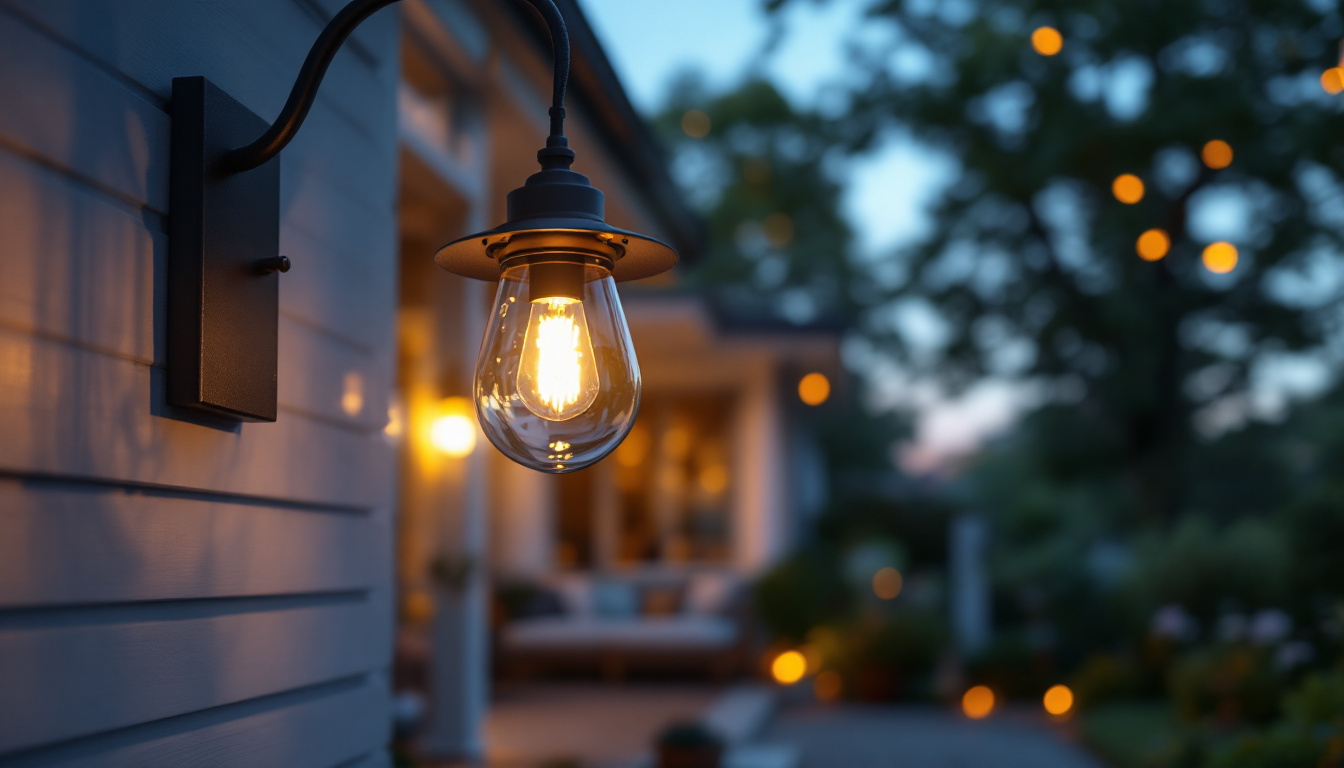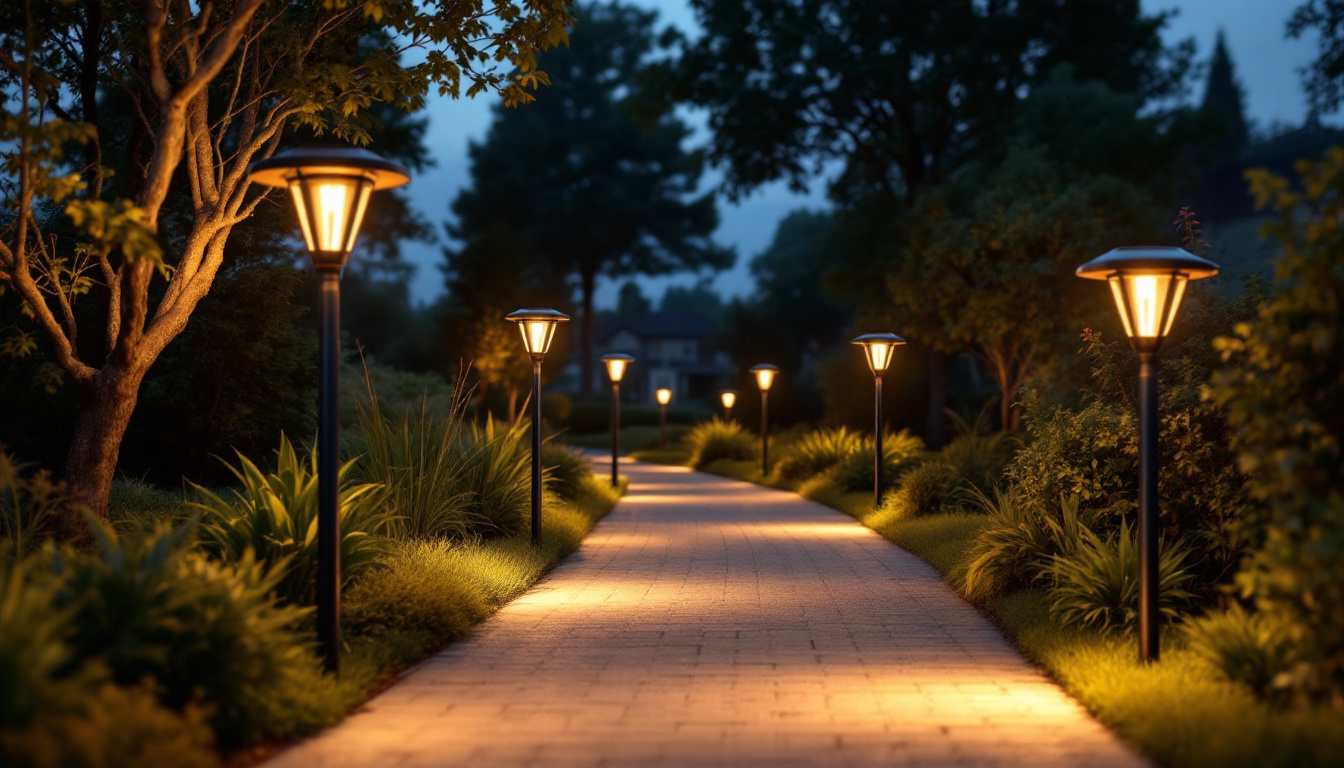

As a lighting contractor, understanding the nuances of hanging porch lights can significantly enhance your service offerings and client satisfaction. This guide aims to provide comprehensive insights into the various aspects of hanging porch lights, from design considerations to installation techniques and maintenance tips. Whether you are working on a residential project or a commercial space, the right approach to hanging porch lighting can transform outdoor areas into inviting, functional spaces.
Hanging porch lights serve both functional and aesthetic purposes. They illuminate entryways, enhance safety, and add character to homes. Before diving into the specifics of installation and design, it is crucial to grasp the fundamental aspects of these lighting fixtures.
Hanging porch lights come in various styles, each suited to different architectural designs and personal preferences. Common types include pendant lights, lanterns, and chandeliers. Pendant lights often feature a single bulb suspended from a chain or rod, making them ideal for modern designs. Lantern-style fixtures evoke a rustic charm, while chandeliers can add a touch of elegance to larger porches.
When selecting the type of hanging porch light, consider the overall aesthetic of the home. A well-chosen fixture can complement the architecture and enhance the curb appeal. For instance, a sleek, minimalist pendant light can harmonize beautifully with contemporary homes, while a vintage lantern might be the perfect accent for a charming cottage. Additionally, the scale of the light fixture should be proportionate to the size of the porch; oversized fixtures can create a dramatic focal point, while smaller ones may blend seamlessly into the background.
The materials used in hanging porch lights significantly impact their durability and appearance. Common materials include metal, glass, and plastic. Metal fixtures, particularly those made from aluminum or brass, are known for their longevity and resistance to weather elements. Glass shades can provide a classic look but may require more maintenance to keep them clean and clear.
Finishes also play a vital role in the overall look. Options like matte black, oil-rubbed bronze, or polished nickel can create different moods and styles. It’s essential to choose finishes that not only match the design but also withstand outdoor conditions. For example, a powder-coated finish can offer additional protection against rust and fading, ensuring that the light fixture maintains its beauty over time. Furthermore, mixing materials can create a unique aesthetic; a combination of wood and metal can evoke a warm, inviting feel, while glass and chrome can lend a more modern vibe.
In today’s environmentally conscious world, energy efficiency is a crucial consideration for lighting contractors. LED bulbs are increasingly popular for hanging porch lights due to their longevity and low energy consumption. They produce less heat and have a longer lifespan compared to traditional incandescent bulbs, making them a cost-effective choice for clients.
Additionally, incorporating smart lighting technology can enhance energy efficiency further. Smart bulbs can be controlled remotely, allowing homeowners to schedule lighting or adjust brightness levels based on their needs. This not only contributes to energy savings but also adds convenience, as lights can be programmed to turn on at dusk or even when the homeowner is away, providing an added layer of security. Moreover, some smart systems can integrate with home automation setups, allowing for seamless control of multiple lighting fixtures throughout the property, creating a cohesive and energy-efficient lighting strategy.
Designing an effective lighting plan for a porch involves more than just selecting a fixture. It requires a thoughtful approach to ensure that the lighting serves its intended purpose while enhancing the overall aesthetic.
The height at which hanging porch lights are installed is critical for both functionality and visual appeal. Ideally, fixtures should be hung at a height that provides adequate illumination without obstructing views or creating glare. A common rule of thumb is to hang them approximately 7 to 8 feet above the ground, but this can vary based on the specific design of the porch.
Placement is equally important. Centering the light fixture over an entryway or seating area can create a focal point, while multiple fixtures may be necessary for larger spaces. Consider the layout of the porch and the areas that require illumination when determining placement. For instance, if the porch features a dining area, placing a pendant light directly above the table can enhance the dining experience, creating an inviting atmosphere for meals and gatherings.
Hanging porch lights should complement the architectural features of the home. For instance, a modern home may benefit from sleek, minimalist fixtures, while a traditional home might look best with ornate, vintage-style lights. It’s essential to consider the color palette, materials, and overall design of the home to ensure a cohesive look.
Additionally, consider the surrounding landscape. The lighting should not only enhance the porch but also harmonize with the outdoor environment. This may involve coordinating with landscape lighting or other outdoor features. For example, if the porch is surrounded by lush greenery, warm-toned lights can create a soft glow that contrasts beautifully with the natural elements, while cooler lights might suit a more contemporary garden design. Incorporating fixtures made from materials that echo those found in the home’s facade can also reinforce this connection, making the porch feel like a seamless extension of the living space.
Lighting is a powerful tool for creating ambiance. For porches intended for relaxation or socializing, softer, warmer lighting can foster a welcoming atmosphere. Dimming capabilities or multi-level lighting can also enhance the versatility of the space, allowing homeowners to adjust the mood as needed.
Consider incorporating accent lighting or decorative elements, such as string lights or wall sconces, to add depth and interest. Layering different types of lighting can create a dynamic and inviting outdoor space. For instance, using a combination of hanging lights for general illumination and small, focused lights to highlight architectural details or plants can draw the eye and create a more engaging environment. Furthermore, integrating smart lighting technology can allow homeowners to control the ambiance remotely, adjusting brightness and color temperature to suit different occasions, whether it’s a cozy evening with family or a lively gathering with friends.
Proper installation is crucial for the safety and functionality of hanging porch lights. Lighting contractors must adhere to local codes and regulations while ensuring that fixtures are securely mounted and properly wired.
Before installation, it is essential to assess the existing electrical system. Ensure that the circuit can handle the additional load of the new fixture. If necessary, consult with an electrician to upgrade the circuit or install a dedicated line for the porch lights.
When wiring the fixture, follow the manufacturer’s instructions carefully. Proper grounding is essential to prevent electrical hazards. Use weatherproof connectors and junction boxes to protect against moisture and corrosion.
Securing the hanging fixture is vital to prevent accidents and ensure longevity. Use appropriate mounting hardware based on the weight and design of the fixture. For heavier fixtures, consider using a ceiling support brace to provide additional stability.
Once the fixture is mounted, double-check that it is level and securely fastened. This not only enhances safety but also contributes to the overall appearance of the installation.
After installation, it is crucial to test the fixture to ensure it operates correctly. Check for proper illumination and any flickering or dimming issues. Make adjustments as necessary, including repositioning or adjusting the height of the fixture.
Encourage clients to familiarize themselves with the operation of the lighting, including any smart features or dimming capabilities. Providing a brief tutorial can enhance their satisfaction and ensure they get the most out of their new porch lighting.
Cleaning hanging porch lights should be a part of routine maintenance. Dust, dirt, and grime can accumulate on fixtures, diminishing their brightness and aesthetic appeal. Use a soft cloth and a mild cleaning solution to gently wipe down the exterior of the fixture, taking care not to damage any finishes.
For glass shades, consider using a glass cleaner to maintain clarity and shine. Regular cleaning not only enhances the appearance but also helps prevent long-term damage from buildup.
Regular inspections can help identify potential issues before they become significant problems. Check for signs of rust, corrosion, or cracking in the fixture. Pay attention to the electrical components, ensuring that wiring and connections remain secure and free from wear.
If any damage is detected, prompt repairs or replacements should be made to ensure safety and functionality. Encourage clients to report any issues as soon as they arise to prevent further complications.
Seasonal changes can impact the performance of hanging porch lights. In colder climates, it may be necessary to prepare fixtures for winter by removing any decorative elements that could be damaged by snow or ice. Additionally, ensure that outdoor electrical connections are weatherproofed to prevent freezing and moisture damage.
In spring and summer, check for any insect buildup or nests that may have formed in or around the fixtures. Regular maintenance during these seasons can help prolong the life of the lighting and maintain its appearance.
Hanging porch lights are an essential element of outdoor lighting design, providing both functionality and aesthetic appeal. For lighting contractors, understanding the various aspects of these fixtures—from types and materials to installation and maintenance—can significantly enhance service offerings and client satisfaction.
By staying informed about design trends, installation techniques, and maintenance best practices, contractors can ensure that their clients enjoy beautifully lit porches that enhance their homes for years to come. Investing time in understanding the intricacies of hanging porch lights can lead to successful projects and happy customers, ultimately contributing to the growth of a lighting contractor’s business.
Ready to elevate your lighting projects with superior quality and unbeatable value? Look no further than LumenWholesale for all your hanging porch light needs. Our spec-grade lighting products are designed to meet the highest industry standards, ensuring you deliver reliability and high performance to your clients. With our direct-to-contractor wholesale pricing, free shipping, and extensive selection, you can enjoy premium lighting solutions at the best price, without any hidden fees or compromises. Make your next project shine and experience the best in wholesale lighting with LumenWholesale.

Discover essential tips for selecting and installing solar post lamps for your driveway.

Discover the key factors that distinguish leading lighting contractors in the LED high bay market.

Discover how industrial pendant lamps can revolutionize the workflow for lighting contractors by offering cost-effective solutions and time-saving installation processes.

Discover why purchasing LED mirrors in bulk from local distributors might not be the best choice.
Get notified when NEW deals are released.
Optimize your budget with wholesale discounts.
Only top-quality, specification-grade lighting products.
No additional costs at checkout - what you see is what you pay.
We understand the unique needs of contractors.